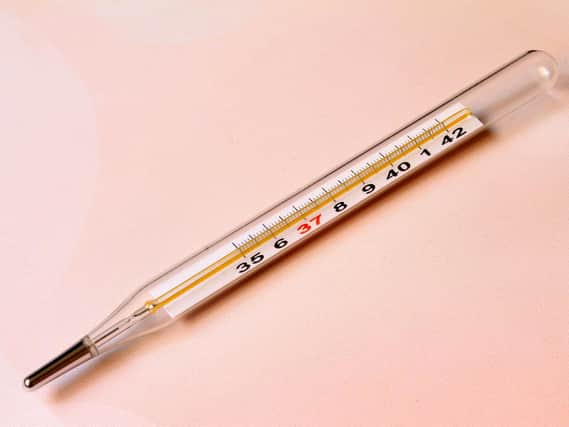Column: How the measuring of temperature has evolved through centuries


A measured temperature of 38° C or above is considered to be significant, when a Covid test should be sought (writes Dr Keith Souter).
From the days of Hippocrates in Classical Greece and all the way through time until the Renaissance the Doctrine of Humours was the dominant theory in medicine.
Advertisement
Hide AdAdvertisement
Hide AdIt was believed that fever indicated an imbalance of vital body fluids called humours.
Doctors were aware that when people had fevers they felt hot to the touch, yet assessing this heat was totally subjective.
In 1625 Santorio Santorio, a friend of Galileo invented a thermometer, capable of assessing body temperature. With it he was able to demonstrate that a fever could actually be shown as well as just felt.
In physics various thermometers were developed by scientists such as Gabriel Fahrenheit who developed his temperature scale in 1704, and Swedish astronomer Anders Celsius who produced his in 1742.
Advertisement
Hide AdAdvertisement
Hide AdIt was not until Prof Carl Wunderlich, a German physician, started researching patient temperatures with a clinical thermometer that doctors started to understand the importance of temperature.
He established that there was a normal body temperature, of 37 degrees Celsius or 98.6 degrees Fahrenheit. His use of temperature charts became an established part of medical practice.
Dr Wunderlich’s thermometer was not a very practical instrument, since it was over a foot in length and took over 20 minutes to record a temperature.
In 1866 Sir Thomas Clifford Albutt invented the short-stemmed clinical thermometer. This contained mercury and was the standard instrument carried by doctors from the 1880s onwards.
Advertisement
Hide AdAdvertisement
Hide AdOver my years in practice I have carried various thermometers in my bag, from the clinical mercury thermometer, to fever scans and then digital ones. It is important in medical practice to measure the temperature precisely.
However, during this pandemic if you develop any of the three main symptoms of Covid – a new continuous cough, loss of taste or smell, or a fever, then you should have a test.
Please note, if you feel feverish and feel hot to touch on your chest or back, that is enough to have a test.